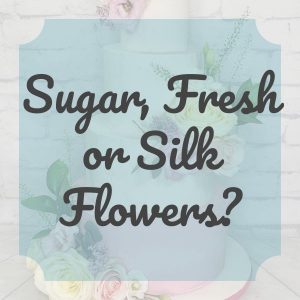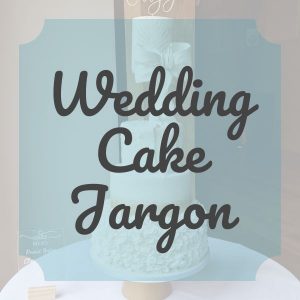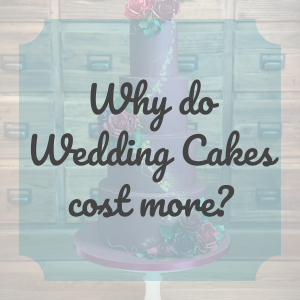History of the Wedding Cake
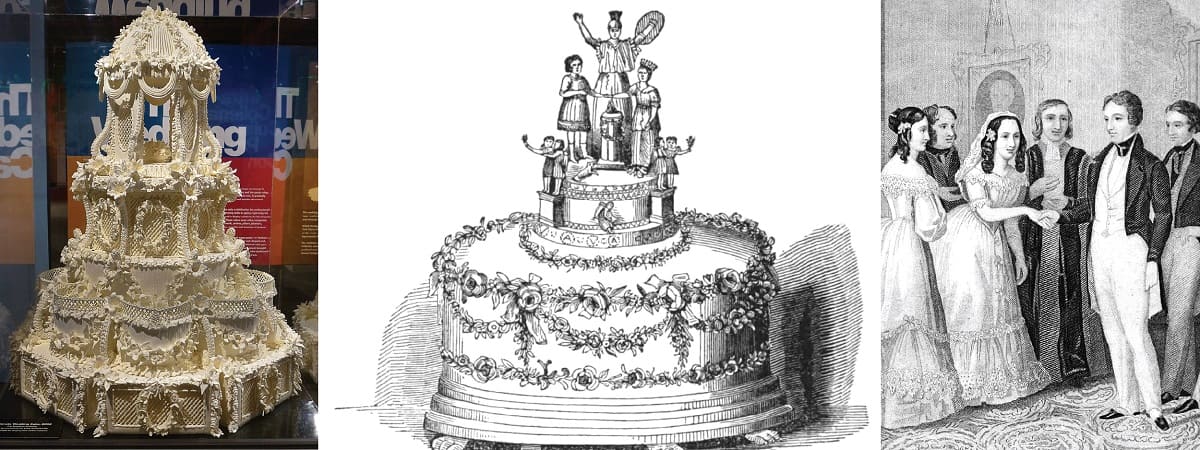
Everyone has a wedding cake, right? Go to any wedding fayre and it is the venue, flowers, dress and cake. What you might not know is the history of the wedding cake plays an important part in what we have as a cake today.
But why do we have a wedding cake? The tradition dates back thousands of years to the age of the Romans when a wheat and barley cake was broken over the bride’s head as a symbol of good luck. Roman traditions play a big part in our lives in Britain today, for instance, the word matrimony is derived from the Roman word matrimonium.
Wedding Pie
The earliest dated “wedding cake” is far removed from what we know today. In fact, it wasn’t even a cake, it was a pie! Imagine a large elaborately decorated savoury pie containing oysters, sweetbreads, pine kernels, lambs testicles and many spices. (Think Game of Thrones, the purple wedding – Joffrey and Margaery are presented with a savoury pie)
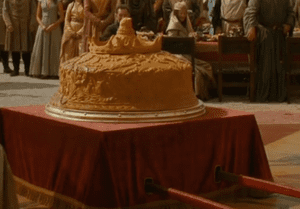
Sugar was not readily available until the 1500s because it was imported and expensive. For this reason, savoury food was the only real option and these fillings were considered a delicacy (thank goodness those days have gone?)
The pie continued to be the tradition in northern England until as late as the 19th century although the fillings changed in favour of chicken, minced meats, nuts and spice.
Traditions
It was considered very bad manners indeed to not have a slice of the wedding pie. Hence the tradition of a large cake to serve all your guests today.
Also, a ring was baked inside the pie and the lucky lady who found it would be the next bride.
From Pie to Cake
Over time it became more traditional to have sweet cake rather than pie. However, ovens were not commonplace at home and it was considered unlucky for the bride to bake her own cake. So folk would opt for the more frugal option of sweet pastry made in a skillet on the range, which was then stacked with dried fruits.
Some 400 years ago it became traditional to have two cakes. One for the bride a lighter cake with a pale covering and one darker fruit-laden one for the groom. The groom’s cake was cut up and given to the guests in little boxes as a good luck wedding memento. Often, in the same way, it is cut up today. This tradition disappeared for years, but Grooms cakes are now back in fashion but are usually a novelty cake in the form of cars, dogs or golf clubs.
The next fashionable thing was a traditional cake but covered in a mixture of sugar and egg white and baked to make this mixture firm. This wonderful meringue-type concoction was appropriately named ‘bliss’.
Royal Cake
In the 1700s the fashion became a fruit cake covered in almond paste and sugar whipped with egg whites to create icing. Finally, the traditional wedding cake as we know it had arrived! The tradition of having a wedding cake in white came about because it showed signs of status and wealth. Refined sugar was becoming more readily available. However, being very expensive meant a cake in pure white icing was a grand centrepiece indeed. Queen Victoria had a grand wedding cake covered in pure white icing. In fact, this is where the name ‘Royal Icing’ comes from.
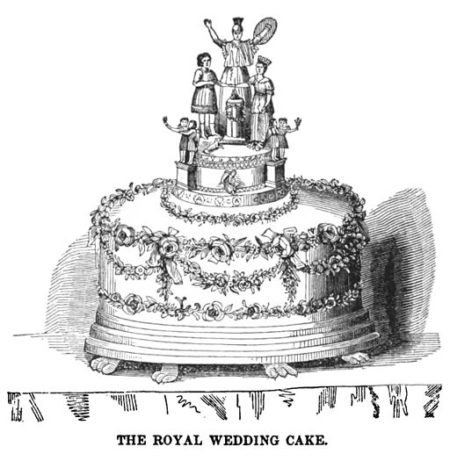
More what we recognise
Wedding cakes carried on in this manner with the addition of beautiful piping and pillars to create tiers until the later part of the 20th century when the recent discovery of sugar paste or fondant icing became fashionable due to its adaptability and ability to colour easily. So now it seems less about how white you can have your wedding cake and more about the overall WOW factor.
Wedding cakes have been a key part of the wedding ceremony for thousands of years. They show signs of fertility and luck and always make for a grand centrepiece.
Here at Quality Cake Company, we take great pleasure in creating showstopping wedding cakes. It is amazing to know we helped create a centrepiece which really does make people go WOW!




